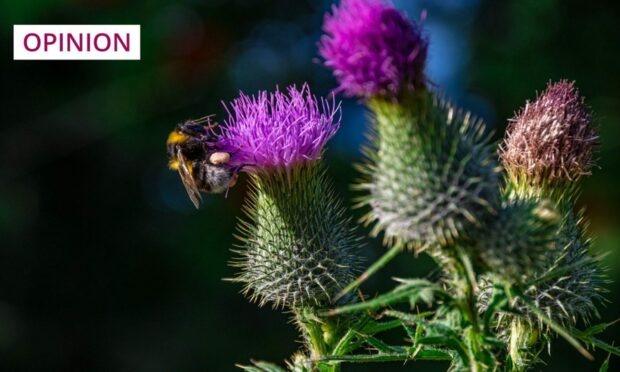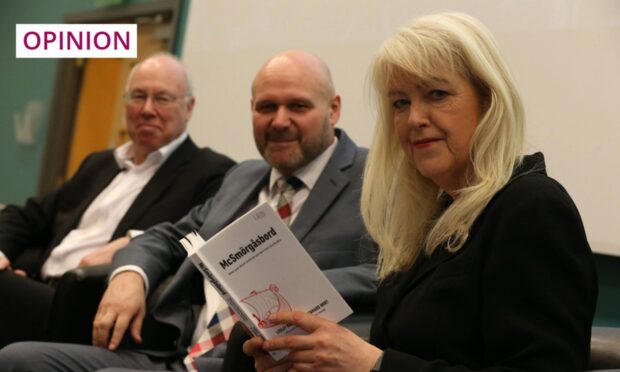When we talk about what sort of Scotland we want to live in, we need to be having louder, clearer, more thoughtful conversations about the country’s land.
Questions about who owns our land, who benefits from it, and how it is managed have profound implications for tackling the overlapping nature and climate emergencies, including through rewilding – in empowering, fair ways for local communities.
Scotland has one of the world’s most concentrated land ownership patterns, with fewer than 500 people controlling half its land. It is one of the world’s most nature-depleted countries, too. This double whammy means having open conversations about how land is owned, and the purpose it is put to, is doubly important.
Two new reports throw this into sharp relief. The Scottish Land Commission’s latest assessment of Scotland’s rural land market makes for sobering reading. It highlights record land prices, with estates and hill farms purchased by wealthy corporations, often as an investment, or for commercial forestry.
For social justice and rewilding, this overheating market is worrying. It risks more inequality and concentrated rural land ownership, as less wealthy prospective buyers – be they charities, local communities, or younger farmers – get priced out.

Meanwhile, a Community Land Scotland report by academic, ecologist, writer and land reform advocate Alastair McIntosh looks at green finance and its implications, and at rewilding.
There is much I agree with, and some things I don’t, in Alastair’s thoughtful paper. Rewilding may be the new kid on the block, but we need to be clear about what rewilding is and isn’t. There are community groups and charities as well as large landowners exploring different rewilding models, while some corporations and businesses are seeking to appropriate the word.
Rewilding – large-scale nature restoration – can create a cascade of benefits for people. It works best when it has people and communities at its heart. Whether by community groups, charities or companies, rewilding is surging across Scotland.
But corporations pursuing carbon credits or the green gold of subsidies and grants are a different beast. Such activities are mostly not rewilding. At worst, they can be greenwashing. When they involve planting the wrong trees in the wrong place, and when they force up land prices out of local people’s reach, they can threaten both rewilding and communities.
So the efforts of a few corporate non-rewilders to associate themselves with rewilding and its popularity should be resisted.
But Alastair’s report offers hope. There is much common ground between Scotland’s rewilding charities, community landowners and land reformers – including the goals of thriving, resilient and empowered communities, restored ecosystems, and concerted action on climate breakdown.
We can all work together
The Scottish Rewilding Alliance wants Scotland to become a rewilding nation, with 30% of land and seas enjoying nature recovery by 2030, where everyone can share in the benefits – from health to community wealth building to flood protection.
This includes more communities being involved in rewilding, sometimes on land they own. It involves repeopling, including through nature-based economic opportunities.
In the Highlands, repeopling is central to Trees for Life’s new Dundreggan Rewilding Centre near Loch Ness, and to our work with the community and landowners in the Affric Highlands initiative – Britain’s largest rewilding landscape, stretching from Loch Ness to the west coast.
Great to see rewilding in Aberdeenshire getting a boost!
“We love the idea of independent projects across Scotland becoming wild stepping stones to larger rewilding efforts"
We need landscapes that aren't just wilder, but are also better connected.https://t.co/ygRTc4XJVM
— The Scottish Rewilding Alliance (@ScotRewilding) June 16, 2023
In Dumfries and Galloway, the 10,500-acre Tarras Valley Nature Reserve on Langholm Moor – created after south Scotland’s largest community buyout so far – is carrying out inspiring work for community regeneration, nature recovery, and climate action.
Across Scotland, Northwoods Rewilding Network, launched by charity Scotland: The Big Picture, now consists of over 50 partners, including community sites, small farms, crofts, and small landholdings.
My hope is that rewilders and organisations such as Community Land Scotland, the Scottish Land Commission and others can explore how we can all work together – and with the Scottish Government – for ambitious and just land-based solutions that benefit people, nature and climate.
By ensuring a rich and diverse pattern of different kinds of landowners – community, private, public, third sector – that stewards Scotland’s land and seas back to health, we can create a country where our communities and nature thrive together.
Steve Micklewright is convenor of the Scottish Rewilding Alliance and chief executive of rewilding charity Trees for Life










